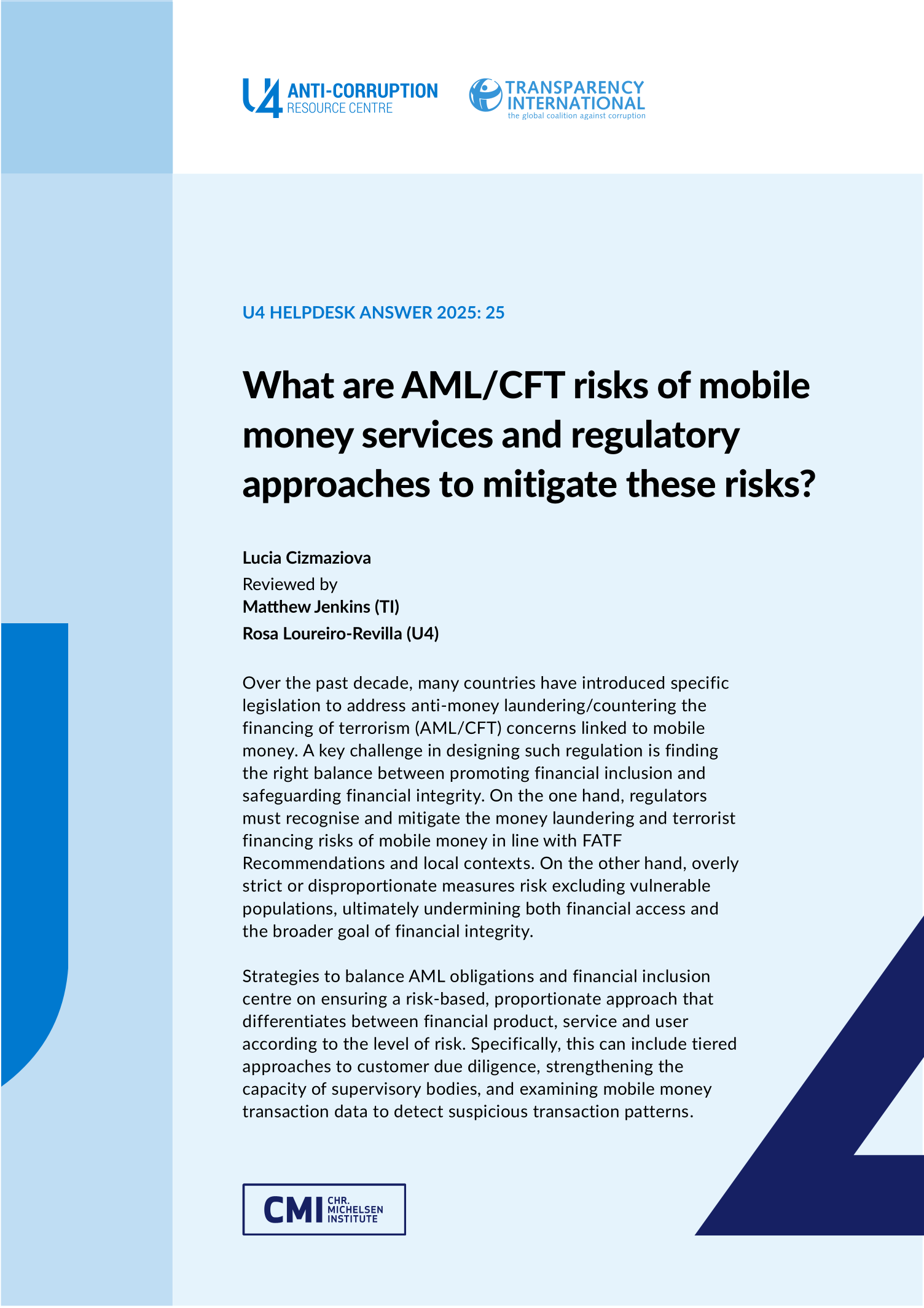Main points
- Mobile money services have risen to prominence in recent years – and especially since the COVID-19 lockdowns – as a means of replacing cash in financial transactions without relying on formal bank accounts, particularly in low and middle-income countries.
- Mobile money services refer to a mobile-phone based financial service that enables digital money transfers, payments and storage. Mobile money services are primarily designed for people who lack formal bank accounts.
- The adoption of mobile money offers underserved populations a convenient and affordable way to conduct secure transfers and payments, while also providing a safe and private means of storing funds. As users become registered and integrated into mobile financial ecosystems, they often gain a pathway to more advanced formal financial services accessed directly through their mobile phones, such as savings accounts, microcredit or insurance products.
- In order to design appropriate risk-based AML/CFT measures, all actors involved in the regulatory action should first understand the distinct features of mobile money services, including their specific advantages, risks and the safeguards needed to address those risks, based on a national risk assessments and understanding the particular risks faced by the jurisdiction.
- Countries must balance the need to regulate mobile money services to minimise their ML and FT risks while considering financial inclusion. Over-regulation could lead to financial exclusion, hampering financial integrity, imposing an unnecessary burden on the stakeholders and actors involved.
- Authorities in low-income countries face additional barriers to effective regulation and supervision of mobile money due to challenges such as a lack of full formal identification systems, limited financial literacy in the population and resource constraints.


